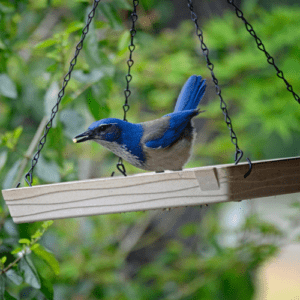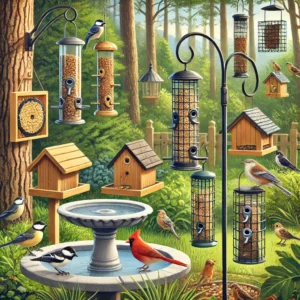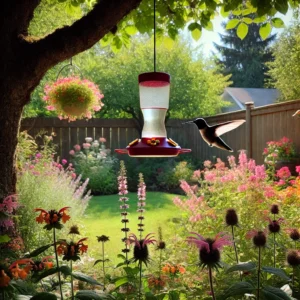Cleaning of the bird feeders regularly keeps them free from disease build-up for your feathered guests. If not cleaned, feeders will be a place where mold, bacteria, and parasites breed, leading to bird diseases. Here is a complete guide on how to clean bird feeders.
Why Regular Cleaning of Bird Feeders is Important
Over time bird feeders gather debris such as seed husks, droppings, and moisture creating favorable conditions for the growth of harmful bacteria and mold. Regular cleaning is essential to prevent the transmission of bacteria that can lead to diseases in birds like salmonellosis, avian pox, and conjunctivitis in addition to ensuring that the food remains fresh and attractive, to our feathered friends.
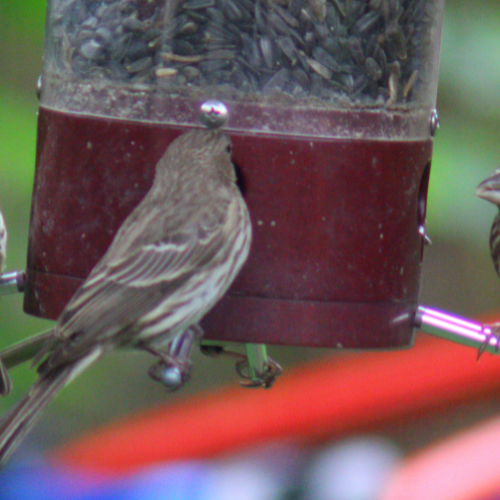
How Often Should You Clean Your Bird Feeders?
Seed and Suet Feeders: Clean these feeders every two weeks, or more often during warm, humid weather when bacteria and mold might grow more rapidly. If you notice mold, clumps of left-over seed, or a build-up of droppings, then clean immediately.
Hummingbird Feeders: These are feeders that require a bit more attention and must be cleaned at least once a week in cooler weather and every 3 to 5 days in hot weather to prevent fermentation of the sugar water and growth of mold.
Learn feeders attract more birds—learn how to make your feeder irresistible to them here.
Required Cleaning Equipment
Hot water
Dish soap for regular cleaning
Household bleach or white vinegar for deep clean
Bottlebrush or old toothbrush
Bucket or tub
Gloves
Rag or towel for drying
How to Clean a Bird Feeder in Detail
1.Clean and Disassemble: Start by removing all seeds or nectar from the reservoir. Take the feeder entirely apart to expose all parts, such as perches, feeding ports, and lids, where the debris can be collected.
a. Routine Cleaning: For lighter cleaning, take the parts of the feeder and scrub them in hot water added with mild detergent using a bottle brush or old toothbrush to reach into corners and crevices. Rinse thoroughly with clean water to eliminate any soapy taste or residue.
b. Deep Cleaning: Do a deeper clean with a bleach solution every few weeks at 1 part to 9 parts water, or with a vinegar solution-1 part vinegar to 2 parts water. Soak all parts of feeders for about 10-15 minutes. After soaking, scrub again to remove any remaining debris and then rinse out with clean water. Read about what are the best ways How to Disinfect a Bird Feeder.
2.Dry Completely: Let all parts of the feeder air dry in a clean, sunny area. Sunlight kills any remaining bacteria and gets rid of odors left by cleaning agents.
3.Reassemble and Refill: Once all the parts are completely dry, put the feeder together again with new bird food inside and hang it in the place desired for its next use.
Other Helpful Cleaning Bird Feeders Tips
Consider Feeder Design: Opt for feeders with features that make disassembling and accessing easier to clean. Models with removable parts or wide openings do not tend to conceal debris and bacteria as much as others and can be scrubbed much better.
Perform Regular Ground Cleaning: You should also make it a regular practice to clean the ground beneath your feeders, clearing off seed husks, droppings, and other debris. This will prevent mold from setting in and also help avoid some unwanted pests at the feeder, like rodents.
Non-Toxic Cleaners: Avoid using strong-odored dish soaps or cleaners, as these can be toxic to birds. Plain hot water, vinegar, or a bleach solution usually does the trick when cleaning the aviary or bird room area.
Addressing Common Issues and Misconceptions
Wooden Feeders: These can absorb moisture and perhaps carry more bacteria. Clean with a mild bleach solution, but with great caution not to harm the wood. Allow to dry thoroughly in the sun.
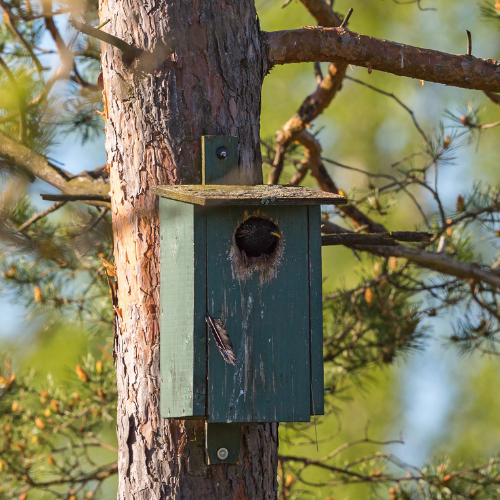
Special Considerations for Winter Cleaning: In cold weather, use warm water to avoid freezing in the feeder. Be on the watch frequently for the development of ice and cleaning of frozen seed debris.
Why Consistent Cleaning Matters
In other words, cleaning bird feeders is not just a matter of hygiene, but it is highly significant from the safety and health perspective of your birds in your backyard. These steps include routine and deep cleaning, comprehensively creating an environment for safer feeding, and will make your experience of bird-watching much more dynamic and variable.

